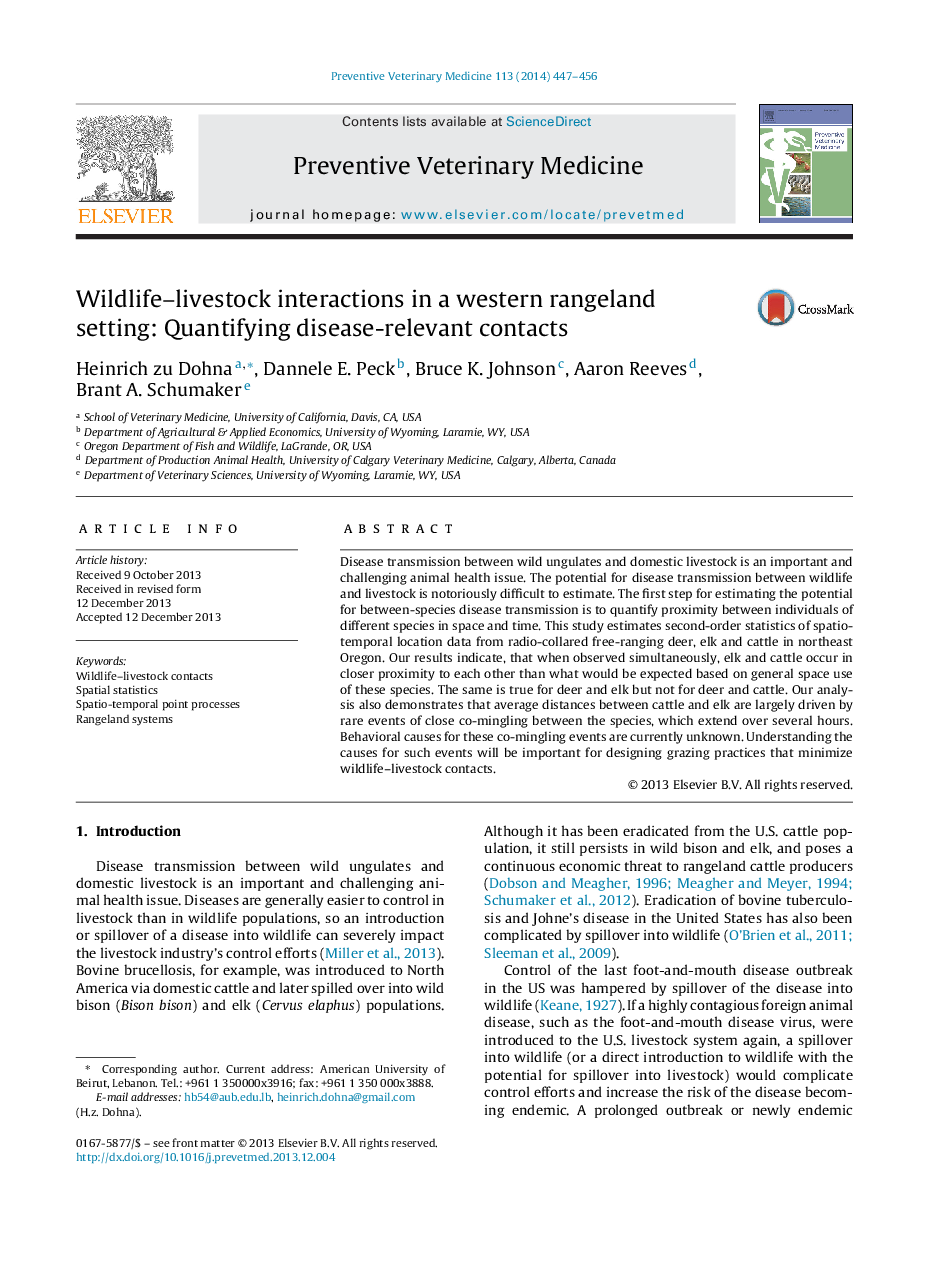| Article ID | Journal | Published Year | Pages | File Type |
|---|---|---|---|---|
| 5793684 | Preventive Veterinary Medicine | 2014 | 10 Pages |
Abstract
Disease transmission between wild ungulates and domestic livestock is an important and challenging animal health issue. The potential for disease transmission between wildlife and livestock is notoriously difficult to estimate. The first step for estimating the potential for between-species disease transmission is to quantify proximity between individuals of different species in space and time. This study estimates second-order statistics of spatio-temporal location data from radio-collared free-ranging deer, elk and cattle in northeast Oregon. Our results indicate, that when observed simultaneously, elk and cattle occur in closer proximity to each other than what would be expected based on general space use of these species. The same is true for deer and elk but not for deer and cattle. Our analysis also demonstrates that average distances between cattle and elk are largely driven by rare events of close co-mingling between the species, which extend over several hours. Behavioral causes for these co-mingling events are currently unknown. Understanding the causes for such events will be important for designing grazing practices that minimize wildlife-livestock contacts.
Keywords
Related Topics
Life Sciences
Agricultural and Biological Sciences
Animal Science and Zoology
Authors
Heinrich zu Dohna, Dannele E. Peck, Bruce K. Johnson, Aaron Reeves, Brant A. Schumaker,
